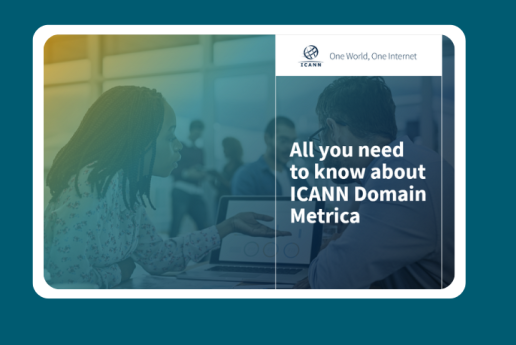How to choose profitable markets for your company's foreign expansion?

Foreign expansion should result from the natural course of things for your company. It should be the next logical stage in the company's development. The first step I recommend to clients before taking action related to entering foreign markets is to study the company's preparation for international expansion.
Each department and all staff must have knowledge, and awareness and demonstrate understanding and acceptance of the company's development strategies and plans on foreign markets. Therefore, “scan” your company and check whether employees in all departments are prepared to work with a foreign client and handle new orders.
Preparing your company for international expansion
Our clients often ask which markets to choose to be successful.
Choosing a market is an important part of your ultimate success. Not the only one, of course, but an important one. Let us, therefore, devote a moment to it.
There are tools that support exporters in making decisions about selecting target markets. I would like to talk about two main ones. Mainly because they are simple and anyone can apply them without specialist knowledge. These are:
- PEST analysis,
- Porter’s 5 Forces analysis.
PEST analysis – assessing the macro-environment
PEST is an abbreviation of:
Political (political and legal factors),
Economic (economic factors),
Social (social factors),
Technological (technological factors).
This analysis is used for the initial assessment of the macro-environment and planning based on its results. The analysis is carried out in three stages:
Stage I
Listing the factors that affect or may affect the company's operations on a given foreign market and in a given segment. These are, of course, political, legal, economic, social and technological factors.
Stage II
Assessing and indicating the factors that have the greatest impact. We take into account both existing factors and ones that may arise in the future.
Stage III
Analysis of the effects of a given factor, meaning how it affects or can affect our company.
PEST analysis protects the company from disappointment and financial failure. It makes it easier to anticipate potential threats and eliminate markets where the risk is too high. It is an effective and easy-to-use tool.
As in this article, we would like to point out as many tools as possible to help you choose export markets, I encourage you to ask questions in the comments.
Porter’s Five Forces – analyzing market competitiveness
The second important tool, as I mentioned, is Porter's 5 Forces analysis, which examines:
- The intensity of competition within the industry,
- The threat of new entrants into the industry,
- The threat of substitute products,
- The bargaining power of buyers,
- The bargaining power of suppliers.
Use this method when you have chosen the direction of expansion and you want to finally confirm the rightness of your choice. The analysis will help you understand what forces are operating inside your sector in a given country and will help you develop a strategy that will give you a competitive advantage.
Before starting the analysis, define the sector. Determine its size and dynamics. Is the competition strong? Are new technologies and products constantly appearing, or are they rather similar? What phase of the life cycle is the sector in (introduction, development, maturity, decline)?
After defining the sector, you can proceed to the analysis.

Intensity of competition
- gather information about the biggest players, list them, try to find information about their market share,
- take a look at their marketing activities, try to assess whether the message is an open price fight, whether players focus on highlighting their strengths, e.g. by distinguishing the product from others with some kind of improvement,
- strong competition and price competition usually mean very low margins,
- if you intend to send goods directly to foreign recipients, remember about additional costs that may reduce the attractiveness of prices (such as transport costs),
- if the competition is high, at this stage you should give up this market and look for other directions.
Threat of new entrants
The risk scale of new entries is assessed by defining barriers. The fewer barriers, the threat of new entries increases and the market profitability decreases.
Specify:
- capital intensity – the higher the amount you need to invest to open a business like yours and develop it on the market, the lower the risk of new entries,
- economies of scale – the higher the economies of scale are achieved by market participants, the lower the risk of new entries; this is due to the fact that new players would have to operate under unfavorable conditions for a long time before they would start to benefit,
- know-how – if the industry uses the expertise that companies have been acquiring and building over many years, the risk of new entries is low; additionally, some technologies may be protected by patents,
- legal obstacles – some industries are limited by state regulations, which significantly impedes the entry of new entities, including foreign ones; in addition, additional criteria are often required to operate in a given industry; the more such restrictions, the lower the risk of new entries,
- product differentiation among competitors – if current producers/suppliers offer technologically diverse products that are not too similar to each other, and their brands have a strong position, then the entry of new players will be difficult, meaning the risk is lower,
- costs of switching suppliers – if the change of supplier is easy for the customer, then the greater the risk that new suppliers will appear and take customers from the existing ones.
Not all of these factors will be necessarily present, but some will certainly occur. Among the factors that will apply, some may indicate a high risk of new entrances and some may indicate a low risk. The results will not always be conclusive. Therefore, in order to assess the competitiveness and profitability potential of the market, it is necessary to analyse the nuances and trends as well as the specific circumstances of a given company or sector.
Threat of substitute products
- Are there any substitutes for your products on the market? What needs do they satisfy? What are their prices?
- Monitor the market for possible substitutes,
- Read the trade press, it includes references to new solutions and technologies that may threaten the position of your product in the future,
- Visit fairs, it is a great source of information about competition and substitutes,
- Perform the analysis of substitutes in the same way as if you were analyzing the competition, for example, analyze the costs of changing your product to a substitute from the consumer's point of view,
- Assess the degree of differences between your product and substitutes,
- If the price and the level of satisfaction of needs correlate with each other, customers will start to choose substitutes, so the price level of a given product is often limited by the prices of substitutes.

The bargaining power of buyers
- affects the competitiveness of the sector, may increase it,
- affects sellers' ability to make profits, can lower them,
- high buyer power can exert pressure on sellers to lower the price, provide higher quality products or improve customer service.
Low bargaining power of buyers reduces competitiveness and increases sellers' profits.
The bargaining power of buyers is high when:
- there are few buyers and many suppliers,
- the costs of switching suppliers are low,
- buyers can easily integrate backward or start their own production,
- consumers are price sensitive and well educated,
- consumers buy a lot of standard products,
- substitutes are available on the market.
When buyer power is low, the above ratios are inverse, e.g. there are many buyers and few suppliers.
The bargaining power of suppliers
We usually need external suppliers to produce our products or services.
If the bargaining power of these suppliers is high:
- suppliers can influence the price of our product by taking away some of the margins from us,
- affect the reduction of quality,
- affect the availability of our products,
- increase competitiveness in the sector,
- reduce the benefits for buyers.
When is supplier power high?
- When the number of suppliers is limited,
- When the costs of switching suppliers are high,
- When suppliers can easily integrate or deliver directly to our customers,
- When buyers do not price sensitive and not very educated about the product,
- When the products are very diverse (not uniform),
- When we are not the main customer of our supplier,
- When there are no substitutes on the market.
When the above points are in opposition, the bargaining power of the suppliers is low.
What else is important when choosing foreign markets?
Customer Segmentation. Who is your product for? Where can you meet your customers? You need to know exactly to who you will target your product and marketing message to. A one-tier strategy is recommended for small and medium-sized enterprises. This means choosing one beneficial segment and focusing all your activities on it. The advantage of this approach is the relatively low cost of application, but there is also the risk of becoming dependent on only one group of customers. I highly recommend exploring the subject of segmentation methods in greater depth.
SWOT analysis. Not only of the company but also of the products in the given markets.
Other methods of selecting the best foreign markets:
- Analytical methods, for example, analytical and point evaluation (multivariate method): consist of selecting indicators characterizing selected countries, determining the point scale of the assessment, assessing the indicators according to the scale, and comparing selected countries according to the decreasing sum of points obtained.
- Portfolio methods, e.g. BCG matrix or McKinsey matrix: this method uses the development potential of the enterprise in a given country and its competitive position.
FAQ – choosing profitable markets for expansion
1.Why is choosing the right market so important?
Because entering the wrong market can lead to wasted resources, low profitability, and even financial losses. Careful analysis increases your chances of success.
2.What is PEST analysis used for?
PEST evaluates political, economic, social, and technological factors in a target market to identify risks and opportunities.
3.How does Porter’s Five Forces help in expansion?
It shows the competitive landscape by analyzing rivalry, new entrants, substitutes, buyers, and suppliers. This helps shape your strategy.
4.Is customer segmentation necessary for foreign expansion?
Yes. Identifying and focusing on the most profitable customer groups ensures more efficient marketing and better resource allocation.
5.What other tools can I use besides PEST and Porter’s analysis?
SWOT, point evaluation methods, and portfolio tools like the BCG or McKinsey matrix can help refine your choice of markets.
I am promoting our services, products, and software. I work closely with the development and support teams, create campaigns and content, manage social media, and translate complex technical concepts into clear communication for our customers.











